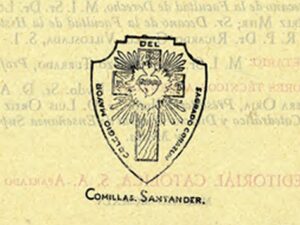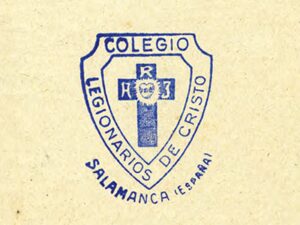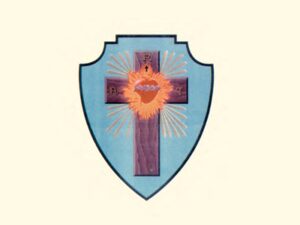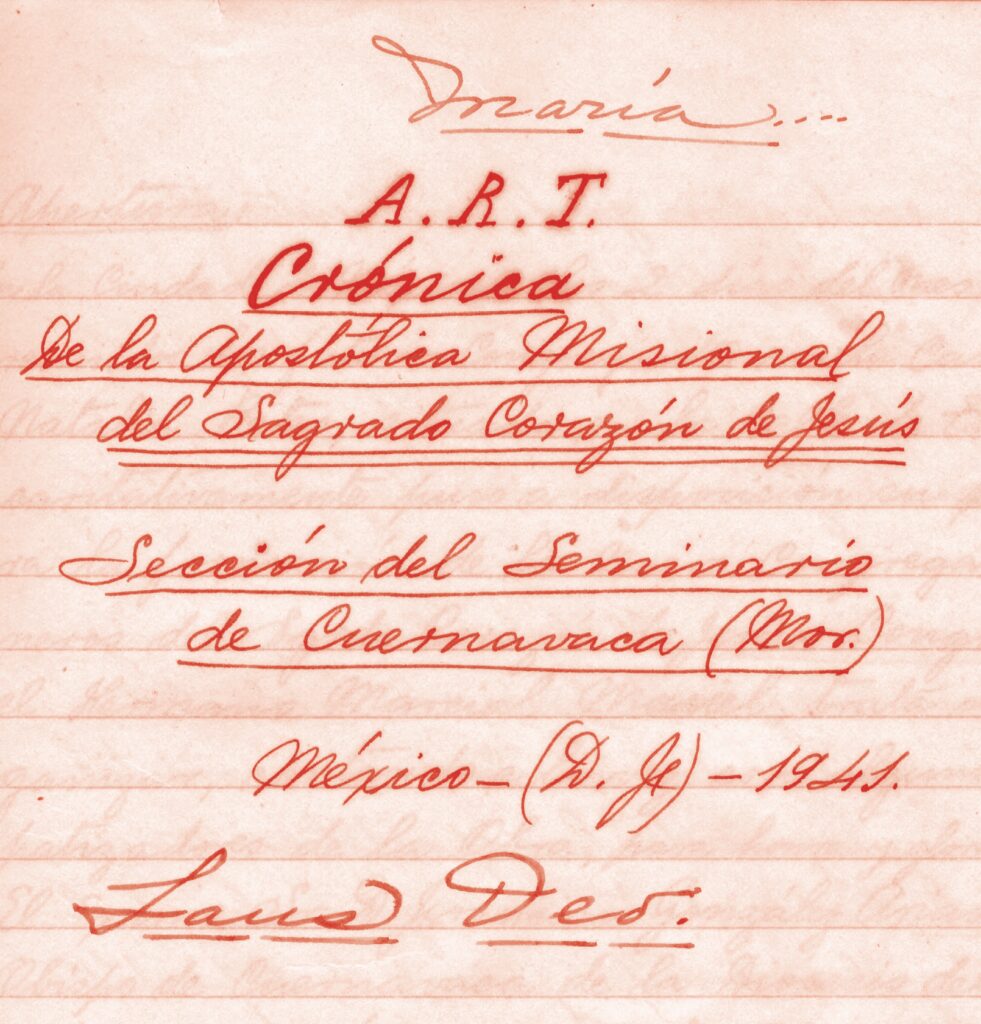The acronym ART stands out on the shield of the Congregation. Its first known representation dates back to 1945 and can be found on the cover of the Regnabit magazine. At that time, it was the emblem of the “Apostólica Misional del Sagrado Corazón de Jesús” and soon became the symbol of the Congregation. Giulio Zamagni, an expert in ecclesiastical heraldry and author of the 2003 book Il valore del simbolo. Stemmi, simboli, insegne e imprese degli Ordini religiosi, delle Congregazioni e degli altri Istituti di perfezione, states that: “The symbol is a universal language that offers multiple meanings accessible to all. The symbol is the language of the sacred that transforms spiritual realities that would otherwise be impossible to represent and communicate.”
The description and symbolism of the Legionary shield appear in Giulio Zamagni’s book as follows:
“The shield of the Legionaries of Christ features a large cross on a blue field, and at the center of the cross is the Sacred Heart of Jesus in red, surrounded by flames, crowned with thorns, and radiating light.
On the three arms of the cross are the letters A, R, T, in gold. It is the acronym for Adveniat Regnum Tuum!, ‘May Your Kingdom Come!’ The heart crowned with thorns, burning with love, and radiating light in all directions, symbolizes the love of Jesus for every person. It is precisely this Christian love, which seeks to respond to the love of Christ, that the Legionaries strive to live and bring to each person through the creation of Christian groups convinced of their faith. In this way, they aim for the integral realization of the Christian vocation in any state of life. The flames emerging from the burning Heart of Christ symbolize the zeal with which the Legionaries of Christ prepare to communicate the fire of love to the entire world. This is the desire expressed in the arms of the cross: Adveniat Regnum Tuum!, May Your Kingdom Come!”








